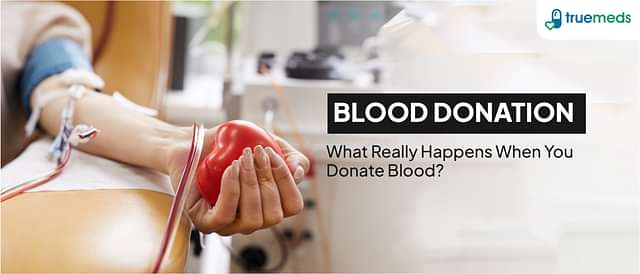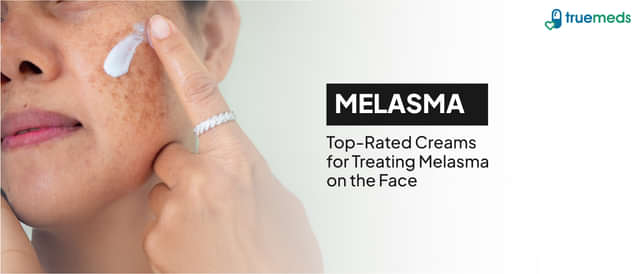Carpal tunnel syndrome: Overview, causes, symptoms, and treatment
Last updated on : 15 Jul, 2024
Read time : 6 min
What is Carpal tunnel syndrome?
Carpal tunnel syndrome affects the hand and wrist, causing discomfort, numbness, tingling, and weakness. It occurs when the median nerve, which is located in the wrist, is subjected to increasing pressure. The thumb, index, and middle fingers, as well as half of the ring finger, are all supplied by this nerve. Typically, the tiny finger (the “pinky”) remains unaffected.
Carpal tunnel syndrome worsens over time in the majority of people, therefore it’s vital to get it diagnosed and treated as soon as possible. Simple steps like wearing a wrist splint or avoiding certain activities can frequently reduce symptoms early on.
However, if pressure on the median nerve persists, it might result in nerve injury and worsened symptoms. For some patients, surgery to relieve pressure on the median nerve may be needed to prevent lasting injury
CTS can have a detrimental influence on a person’s quality of life if they do not receive treatment. The median nerve can become severely injured over time, causing chronic numbness in the fingers and weakening in the muscles it innervates.
Carpal tunnel syndrome symptoms
Carpal tunnel syndrome can cause a variety of symptoms, such as:
- Shock-like sensations on the thumb, index, middle, and ring fingers every now and then.
- Pain or tingling in the forearm that may travel to the shoulder
- Hand clumsiness and weakness can make fine movements like buttoning your clothes difficult.
- The thumb, index, middle, and ring fingers experience numbness, tingling, burning, and discomfort.
- Numbness, weakness, or a loss of proprioception can lead you to drop things
The symptoms usually appear gradually and without a specific injury. Many individuals experience symptoms that come and go at first. As the illness progresses, however, symptoms may appear more frequently or for longer periods.
Symptoms that occur at night are fairly prevalent. Symptoms may wake you up because many people sleep with their wrists bent. carpal tunnel syndrome signs commonly occur during the day when holding anything for a long time with the wrist bent forward or backward, such as when talking on the phone, driving, or reading a book.
Many patients report that shaking or moving their hands makes them feel better.
Carpal tunnel syndrome causes
The carpal tunnel often referred to as the carpal canal, is a thin, stiff channel of bones and ligaments located near the base of the hand. Carpal tunnel also houses the median nerve and tendons.
Because the tendons become irritated and inflamed, or because additional swelling places pressure on the median nerve, the carpal tunnel can sometimes constrict.
The median nerve is responsible for sensations in the palm, thumb, and three additional fingers. The median nerve also controls the muscle that allows you to move your thumb across your palm to contact your little finger. The little finger has lost its ability to regulate itself.
Pain, numbness, and weakness in the hand and wrist can be caused by pressure on this nerve, which can spread up the arm and even to the shoulder. For ways to alleviate these symptoms, check out our article on hand pain relief home remedies.
For a variety of reasons, CTS can develop. However, if the person constantly employs extremes of wrist mobility, is exposed to vibration, and uses their fingers repeatedly, such as when typing, it is more likely. There isn’t always an obvious reason behind something.
The following are the most common reasons:
- actions that are repeated
- Vibrating hand tools are used frequently.
- tension at work
- Oedema or fluid retention can occur during pregnancy, for example.
- rheumatoid arthritis, inflammatory arthritis, and degenerative arthritis
- Hypothyroidism, often known as thyroid hypothyroidism, is a condition in which the thyroid gland is underactive.
- diabetes
- Dislocation or fracture of the wrist are examples of trauma
- The wrist joint has structural difficulties.
- The wrist has lesions
- in the carpal tunnel a cyst or tumour
- Hyperactive pituitary gland
- Swelling or inflammation around the tendons of any kind
Carpal tunnel syndrome treatment
Carpal tunnel syndrome can be treated non-surgically or surgically. Both methods have advantages and disadvantages. Non-surgical therapies are typically used for less severe situations and allow you to go about your routine without interruption. Surgical therapies can help in more serious situations and have a high success rate.
Treatments without surgery
Treatments that aren’t surgical are typically explored initially. Starting with:
- At night, I use a wrist brace.
- Ibuprofen and other nonsteroidal anti-inflammatory medications
- Injections of cortisone are used to treat a wide range of ailments.
- Other treatments concentrate on strategies to reduce symptoms by altering your environment. This is common in the workplace, where carpal tunnel syndrome can be alleviated by making adjustments. Among the potential adjustments are:
- You can adjust the height of your chair by lifting or lowering it.
- Move the keys on your PC.
- While completing activities, change your hand/wrist position.
- A hand therapist will prescribe splints, exercises, and heat treatments.
Surgical procedures
When non-surgical therapy fails to relieve carpal tunnel syndrome or the condition has progressed to the point where surgery is required. The purpose of surgery is to increase the tunnel’s size to relieve pressure on the nerves and tendons that run through it. The ligament that covers the carpal tunnel at the base of the palm is sliced (released) to accomplish this. The transverse carpal ligament is the name of this ligament.
Have an outpatient surgery where you will be awake but anaesthetized locally (pain-numbing medication). An IV (straight into the vein) anaesthesia may be offered by your doctor in specific instances. This option allows you to take a short snooze before the treatment and then wake up after it’s over. This is not a surgical anaesthetic. Instead, during the surgery, your healthcare team will keep an eye on you (called monitored anaesthetic care, or MAC). A colonoscopy, for example, is performed using this technique.
For the first 24 to 72 hours after surgery, expect to be in some discomfort. Even the night after surgery, people frequently have complete nightly symptom alleviation.
Prevention
Carpal tunnel syndrome is a difficult condition to avoid. Because there are so many various things in a person’s daily life that can trigger the illness, prevention can be difficult.
Other means of prevention include:
- Wrists held straight during sleeping.
- When handling tools, keep your wrists straight.
- Avoid continually flexing (curling) and stretching your wrists.
- Repetitive/strong clutching with the wrist flexed should be reduced.
- Taking frequent pauses from the repetitious activity is a good idea.
- Conditioning and stretching exercises should be done before and after activities.
- Medical disorders associated with carpal tunnel syndrome should be monitored and treated appropriately.
For the all latest coupons and offers on medicines, follow us on Instagram and Facebook
Disclaimer
Our healthcare experts have carefully reviewed and compiled the information presented here to ensure accuracy and trustworthiness. It is important to note that this information serves as a general overview of the topic and is for informational purposes only. It is not intended to diagnose, prevent, or cure any health problem. This page does not establish a doctor-patient relationship, nor does it replace the advice or consultation of a registered medical practitioner. We recommend seeking guidance from your registered medical practitioner for any questions or concerns regarding your medical condition.
Popular Articles
Recommended Articles
Recent Articles
Top-Selling Medicines:
...View more
Top-Selling OTC:
...View more
Company
About UsHealth ArticleHealth StoriesDiseases & Health ConditionsAll MedicinesAll BrandsNeed HelpFAQSubscribe
Registered Office Address
Grievance Officer
Download Truemeds

Contact Us
Our customer representative team is available 7 days a week from 9 am - 9 pm.
v3.7.10
Our Payment Partners



























































